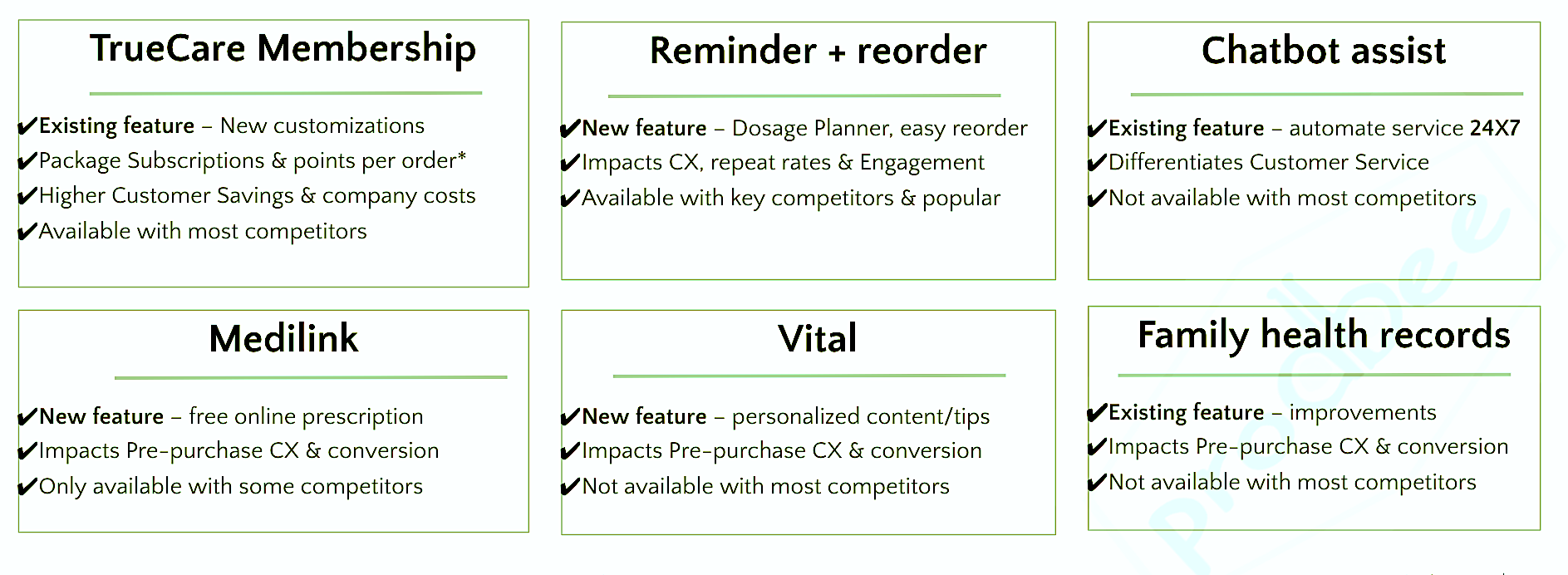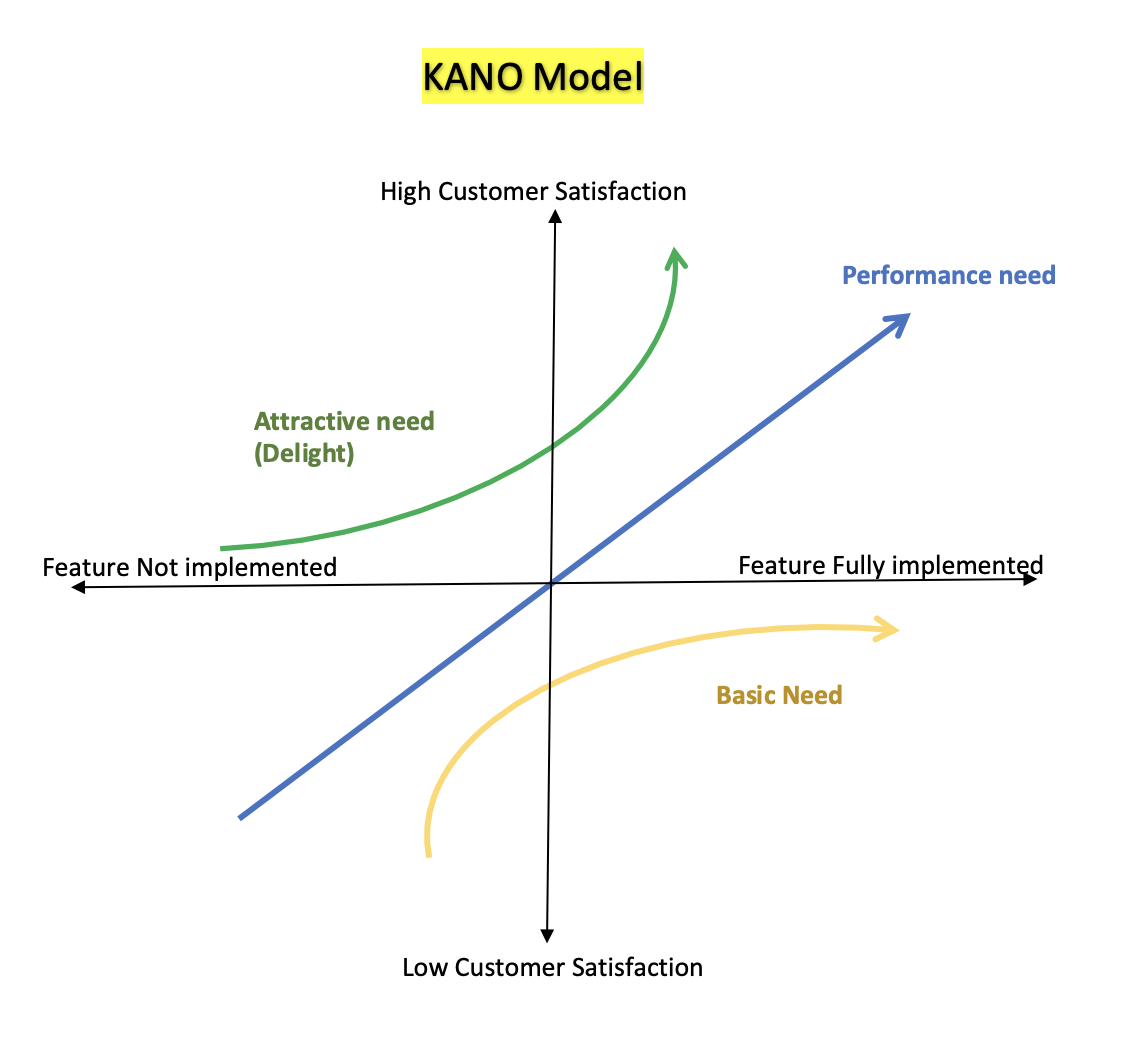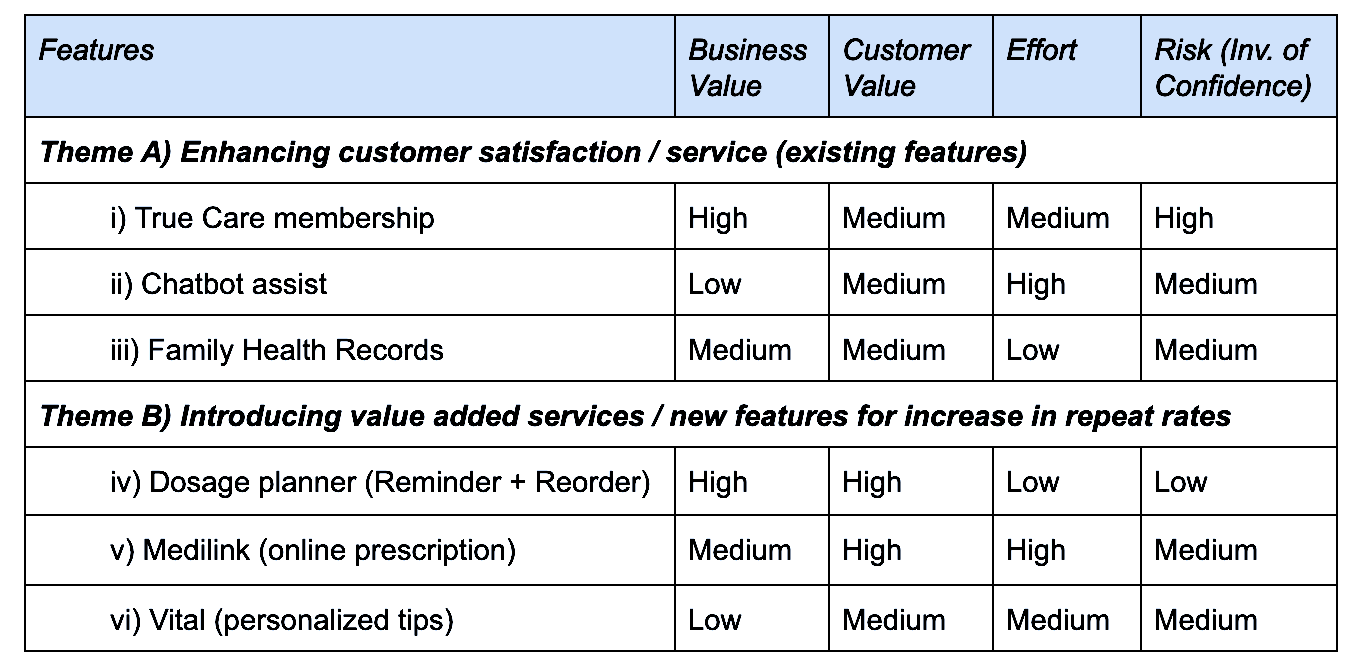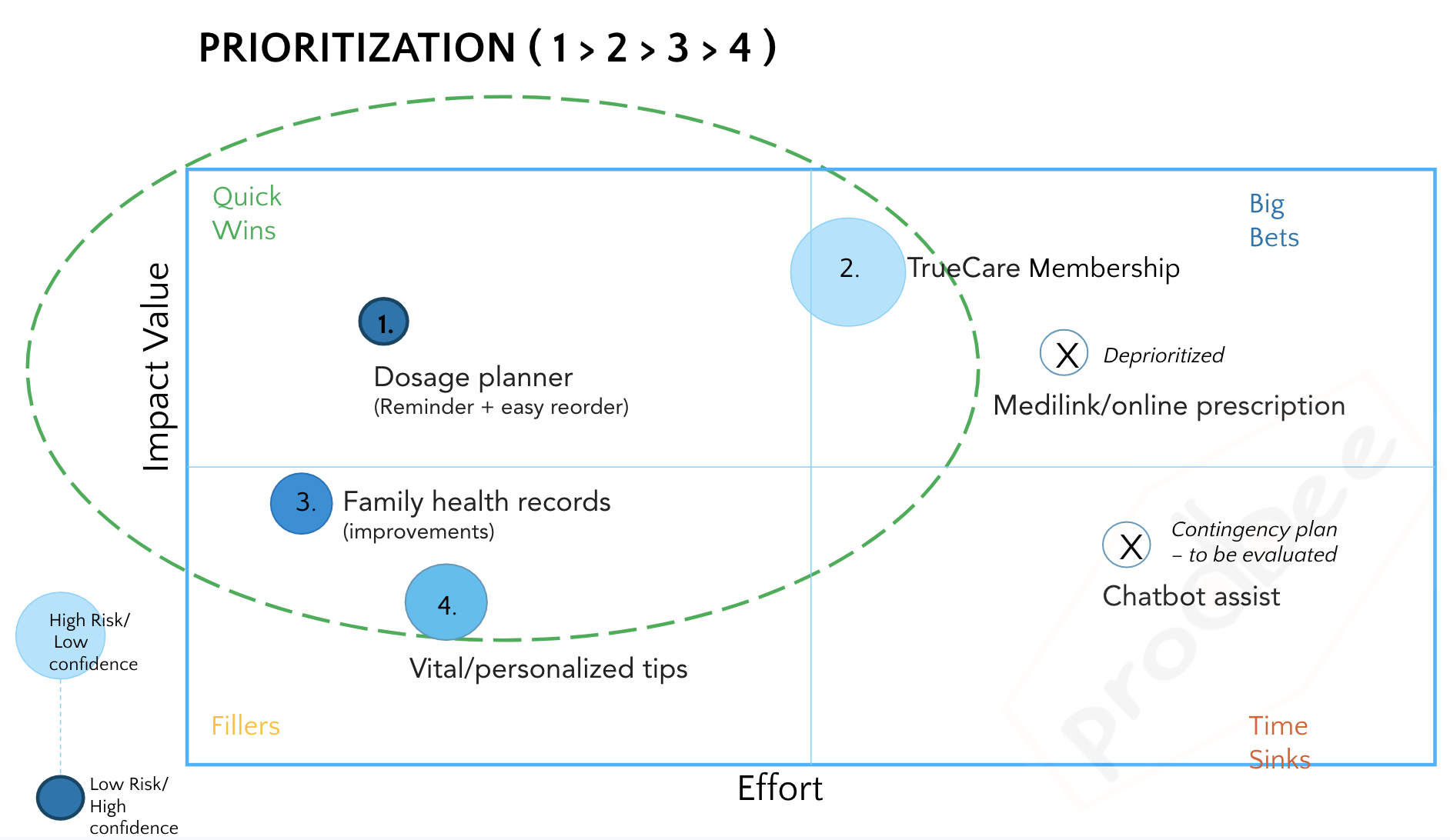Prioritization is a key skill in Product Management. It ensures that Product companies invest on most important products features and also build a space for innovation. It requires a detailed impact-effort analysis and active stakeholder management. Product Managers use quantitative tools to lay down objectivity and fairness while managing stakeholders’ opinions and satisfaction. In quantitative frameworks, often even strong opinions from customers or a business stakeholder are undermined as numbers are emotion agnostic. Therefore, a good Product Manager is the one who display a high degree of both objectivity and empathy.
Let’s take some example situations where feature prioritization may easily fail even though customers sentiments regarding the feature are really high.
- Number of users of a feature are less in number but it’s emotional value for customers is high
- Feature’s true impact on customer’s daily lives is not accurately measured
- Impact of unhappy customers (or to be unhappy) on business is not well understood
Failure to analyse customer’s emotions during prioritizations have caused many Product failures and PR disasters. In the famous “New Coke” disaster of 1980’s, a functional aspect (sweetness preference of new customers) was prioritized over emotions of loyal coke customers who swore by the original bitter taste. Coca Cola lost millions and finally had to recall “New Coke” after massive public outrage. Also, since Product and Business objectives are tied together, product prioritizations have to be considerate of business stakeholder’s opinions and priorities. Imagine a Product with successful metrics on paper but dissatisfied stakeholders waiting for it to fail.
The steps mentioned below explain a highly analytical product prioritization approach that also manages empathy & satisfaction among stakeholders (including customers). New impact factors like emotional value and priority of the customers are introduced within the standard framework of Impact vs Effort. To make it more meaningful to stakeholders, “theme” based grouping of product features is used. PMs first prioritize the “themes” as per stakeholder objectives. Afterwards, the relevant product features are listed and prioritized.
Themes : Feature bundles with common objectives
 Step 1) List and prioritize Product themes :-
Step 1) List and prioritize Product themes :-
While collaborating with stakeholders, Product leads build consensus on prioritizations and timelines of “product themes”. It is an outcome driven strategy in which multiple themes of one or two objectives are prioritized in the roadmap. PMs build themes from the annual goals and prioritize them across quarters/sprints as part of long term planning. Product themes are generally groupings of similar set of product features but product vision is more important than the feature details. Theme prioritization helps teams to focus by avoiding conflicts. It also makes prioritization more transparent and predictable for the stakeholders. Mentioned below are some examples of how themes could be described.
| Theme A) - Enhancing customer satisfaction / service (existing features) Theme B) - Value added services / new features for increase in repeat rates Theme C) - Improving customer experience of checkout flow & increasing booking conversions |
Lets assume that as per alignment with stakeholders, the below Themes A and B has greater priority than Theme C in current prioritization cycle
Note:- Themes could be spread across multiple quarters or sprints. Working on more one theme at the same time could also be common
Step 2) List the plausible product features for prioritized themes :-
Each theme is split into multiple features with the defined objectives. Product Manager’s own experience may not be the only way to define this feature list. This can be done creatively with contributions from different teams.
Feature list could be built by adopting the following techniques -
- Brainstorming sessions with Business, Design, Engg. & Product teams
- Backlog of feature requests
- Market/industry trends
- Competitors
- Existing product extensions/modifications
For Prioritized Themes below -
Theme A) - Enhancing customer satisfaction / service (existing features)
Theme B) - Value added services / new features for increase in repeat rates
Feature are -
 Note:- Since the features are not detailed or analysed yet, product vision is more important than feature detailing at this stage
Note:- Since the features are not detailed or analysed yet, product vision is more important than feature detailing at this stage
Impact Value of features
Step 3) Identify “Business / Opportunity Value” of features :-
Business /opportunity could be measured by projecting historical , estimated or market data of business metrics like revenue, profit and efficiency. The opportunity cost e.g. GMV loss per day can also indicate the sense of urgency.
- Revenue impact - Increase in GMV
- Customer acquisition - rate of growth of new customers
- Profit impact - increase in profit margins
- Operational efficiency - Manhours saved
Note :- For products with Customer satisfaction as primary objectives, emotional value can already be included in NPS/CSAT scores
Step 4) Identify “Customer Value” of features :-
Customer Value is often less deterministic as compared to business/opportunity but it can be roughly measured by proxy metrics like usage, engagement, CSAT, NPS.
- Usage or Engagement -
Measured by Number of users using the feature (Reach), Value of customers using the feature - CLV, Loyalty, Engagement impact, Satisfaction impact - NPS/CSAT - Emotional value for target customers -
Emotional Value can be measured by
i) Asking open questions to customers directly
ii) Survey data on how much customers love that feature
iii) Using usability studies with and without the feature
iv) Finding out number of feedbacks the feature received from customers
v) In some situations, you can also look at how many customers complained when the feature was not working properly (downtime) and how strong, quick user feedback was
“Kano model” is a popular prioritization tool used for prioritization. It is very effective when used for defining Customer Value. Customer value from features can be determined by classifying them into attractive needs, performance needs or basic needs and checking the stage of the feature.
- Attractive Needs: These features trigger feelings of high satisfaction and delight, but users are not dissatisfied if the feature are not present
- Performance Needs: These features cause delight if they are present and cause dissatisfaction when they are not (or if they are poorly implemented). They’re very one-dimensional in nature and rely on good execution in order to be valued by users
- Basic Needs: These are must-haves from customer expectations. Not including them is dissatisfying, but the ROI of improving them goes down sharply

Cost of features
Step 5) Identify estimated Effort for features :-
Effort could be measured in terms of manhours required for building the product feature. One must also check if relevant expertise is available for feature development. In other words, Effort must also include probabilistic time-effort required to identify and resolve technical complexities and also time for testing. e.g. XXL, XL, L, M, S (called T-shirt sizes) assuming a Large (L) effort feature takes 30 days or 2 sprints for development and testing. Based on the effort and resources at hand, we can identify the possible timeline and schedule for each of the feature.
Step 6) Identify Risk / Confidence for features :-
The products features should also be weighed against Risk and Confidence. E.g. The Business value impact for feature X may be high but confidence on its impact achievement may be low. Also, there could be predictable or unforeseen operational/technical failures during development and execution. During prioritization, one must carefully assess and quantify those risk for better decision making and risk mitigation.
Prioritized Feature Set
Step 7) Rate features based on each factor :-
Points or ranks or categories (High, Medium, Low) are given for each of the factors (business and customer value, effort and Risk) against the feature. Customer and Business value can be aggregated as ‘Impact value’ with appropriate weightage.

Step 8) Rank the features or set the overall feature priority :-
Considering Impact Value, Effort and Risk/confidence, PMs should be able to come up with a clear priority of product features in Ranking or Points. It can also be useful to give different weights to different factors before arriving at final feature priorities. It is important to not just quantify the priority based on the factors but also to represent the priority and communicate it to the stakeholders in understandable fashion. The below graphical representation is a useful way to represent the overall priority in the dimensions of value, effort and risk/confidence
 Note :- For overall prioritization, Product feature can be classified as i) P0- High priority/Most Urgent ii) P1- Medium priority/less-urgent iii) P2-Low priority/least-urgent. Alternatively Product feature could also be classified as i) P0- Sacrifice others for this ii) P1- Try to keep iii) P2- Sacrifice these for others
Note :- For overall prioritization, Product feature can be classified as i) P0- High priority/Most Urgent ii) P1- Medium priority/less-urgent iii) P2-Low priority/least-urgent. Alternatively Product feature could also be classified as i) P0- Sacrifice others for this ii) P1- Try to keep iii) P2- Sacrifice these for others
Starting from Themes, we have now finalized a limited number of prioritized features for our upcoming roadmap (or sprint). Having a properly documented and well-rehearsed prioritization process helps all team members and stakeholders. It gives a logical structure to otherwise scattered arguments during prioritization. Also, since a PM is as good as his communications, it communicates the prioritization clearly, effectively and saves more time for creative discussions within teams :)

 Behavioral Psychology Hacks for PMs :
Behavioral Psychology Hacks for PMs :